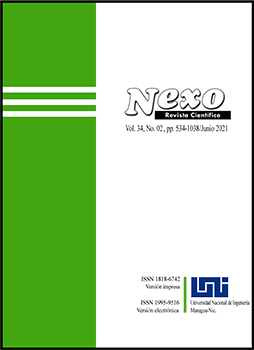Emoji captcha; a novel option for protect web pages
DOI:
https://doi.org/10.5377/nexo.v34i02.11545Keywords:
Emoji, GIF, SecurityAbstract
In this work, a development of a captcha variant is presented with the use of a gif image, composed of 6 frames; each frame is made up of 9 images arranged in a 3 by 3 matrix; Each image used expresses an emotion from a set of 5 basic emotions. Each of the 9 sectors into which the gif is divided is assigned a digit mark, in order for the user to recognize an emotion within the gif and using their cognitive skills to relate this emotion to a number and, in this way, identify the right answer. A simple and safe alternative is proposed for the protection of websites, ideal for a wide range of users, regardless of their age or computer knowledge, this is due to the use of emotions that are recognized by every human being. Current developments perform network traffic analysis and response time to identify if the user is human or a malicious program, allowing attackers to access other types of user information in a simpler way, the advantage of this proposal comes from fact of the regeneration of the captcha and the redistribution of the identification numbers every 2 minutes, reinforced by a series of applied distortions, in this way the attackers cannot access extra information from the user and due to the regeneration time makes it unfeasible for him.
Downloads
860
Downloads
Published
How to Cite
Issue
Section
License
Copyright (c) 2021 Universidad Nacional de Ingeniería

This work is licensed under a Creative Commons Attribution 4.0 International License.
The authors who publish in Nexo Scientific Journal agree to the following terms:
- Authors retain the copyright and grant the journal the right of the first publication under the license Creative Commons Attribution License, which allows others to share the work with a recognition of the authorship of the work and the initial publication in Nexo Scientific Journal.
- Authors may separately establish additional agreements for the non-exclusive distribution of the version of the work published in the journal (for example, in an institutional repository or a book), with the recognition of the initial publication in Nexo Scientific Journal.
- Authors are allowed and encouraged to disseminate their works electronically (for example, in institutional repositories or in their own website) before and during the submission process, as it can lead to productive exchanges, as well as earlier and greater citation of published works.










